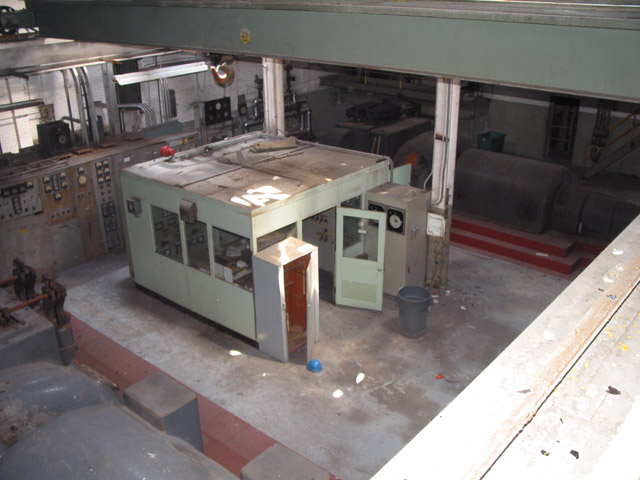
The 16-stage turbine in the left of this picture is rated at 7500 KW. I don't recall the output capacity of the other turbine in this room, but it was in the same neighborhood.
GP Kalamazoo Mill - Powerhouse and Coal Bunker: Turbine Room
Alliedpaper.org Home / GP Kalamazoo Mill / Powerhouse and Coal Bunker
Coal Bunker * Boiler Room * Turbine Room
This plant's "turbine room" actually consists of two adjacent rooms. We started off by looking around in what seems to be the main turbine room; it contains two turbines, a lot of indicator panels and switchgear, and the power plant office:

The 16-stage turbine in the left of this picture is rated at 7500 KW. I don't recall the output capacity of the other turbine in this room, but it was in the same neighborhood.

Here's a closer look at the rightmost turbine-generator set.
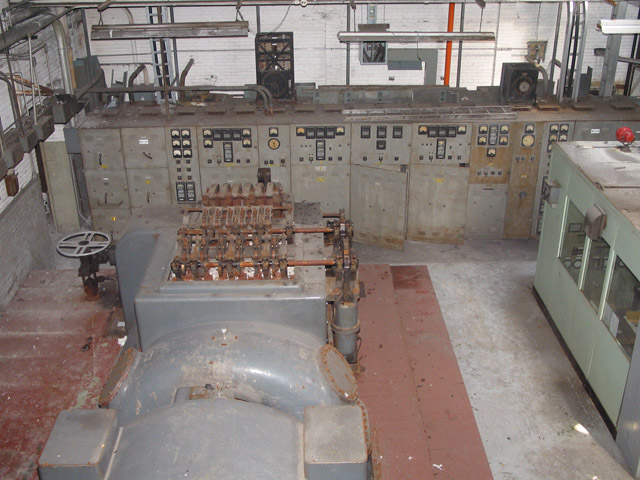
The control and meter panels in this plant look pretty antiquated.
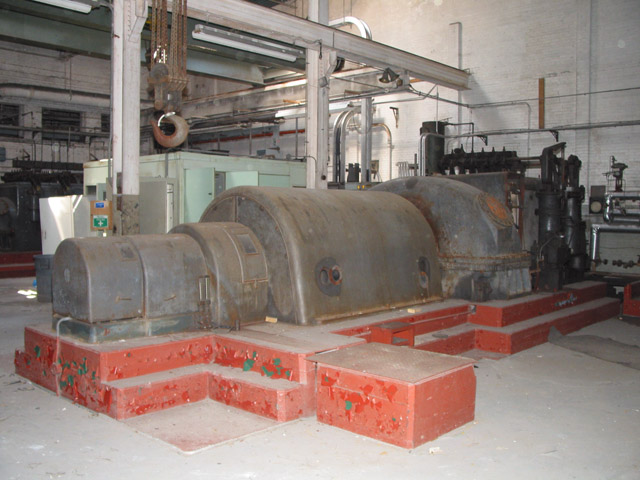
If this is what a 7 MW turbine-generator looks like, I wonder how big a modern 800MW unit is.
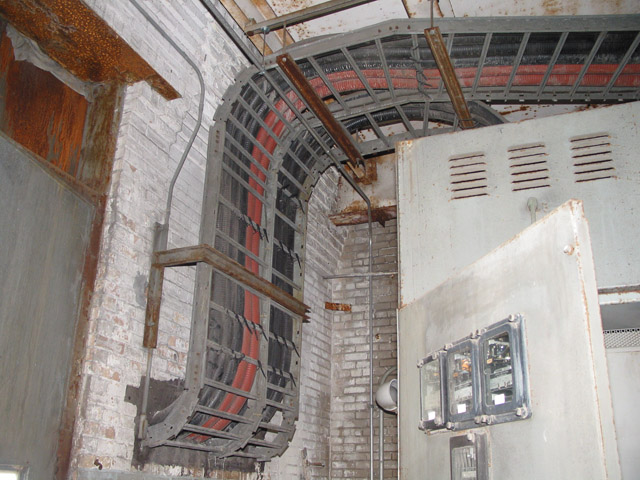
The cables in these conduits conveyed electricity between the generators, the utility, and the various loads throughout the mill.
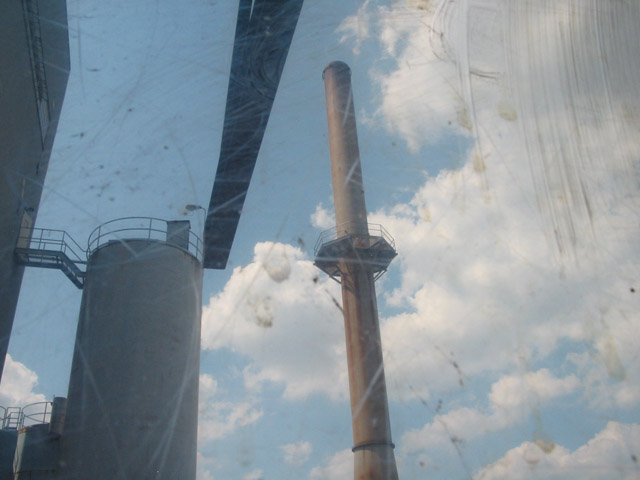
A smokestack and a few cylinders are visible from one of the turbine room windows. I believe that this smokestack was used to exhaust the combustion products of the coal boiler only, and that the cylinders were involved in "scrubbing" or otherwise cleaning up the smoke before releasing it into the atmosphere.
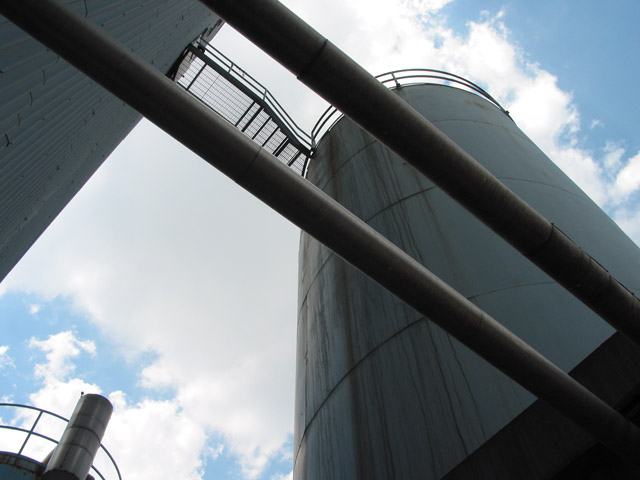
I wouldn't particularly fancy a walk on that catwalk.
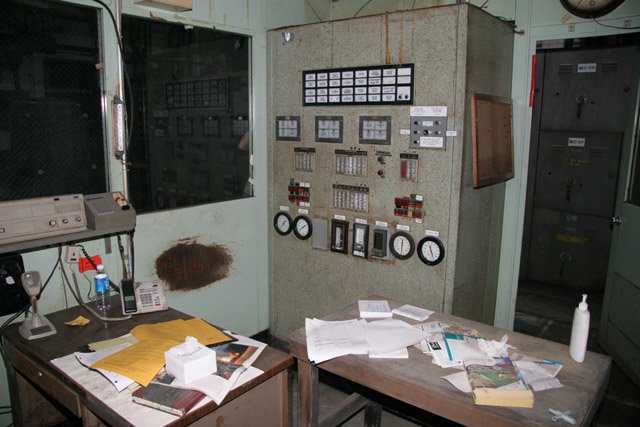
Going back inside, we take a peek into the little office that sits in the middle of the turbine room.
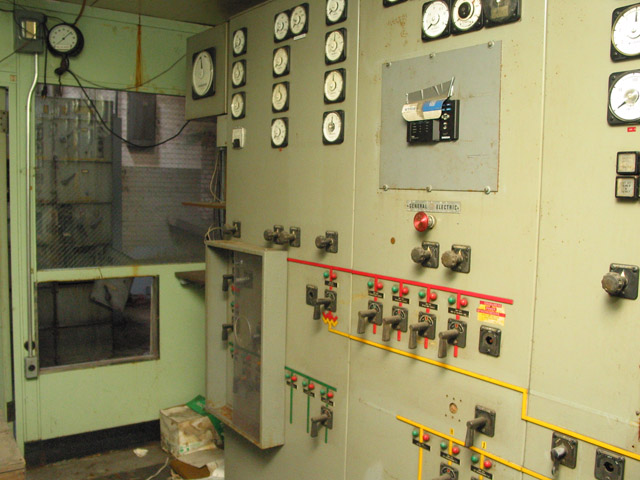
It's really sort of a combination office and control room. What I wouldn't give to work in a place like this... On another note, I wonder what that big red button under the General Electric placard was for.

No power plant would be complete without a synchroscope. Maybe I could install a synchroscope in my cubicle, but what would it measure?
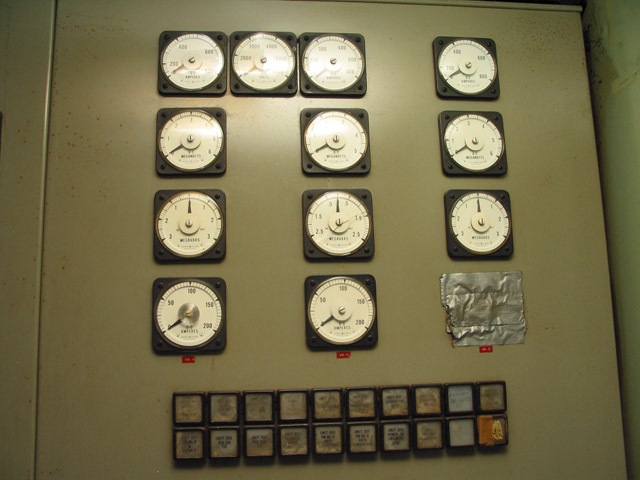
This collection of gages looks fairly similar to those in the Crown Vantage powerhouse.
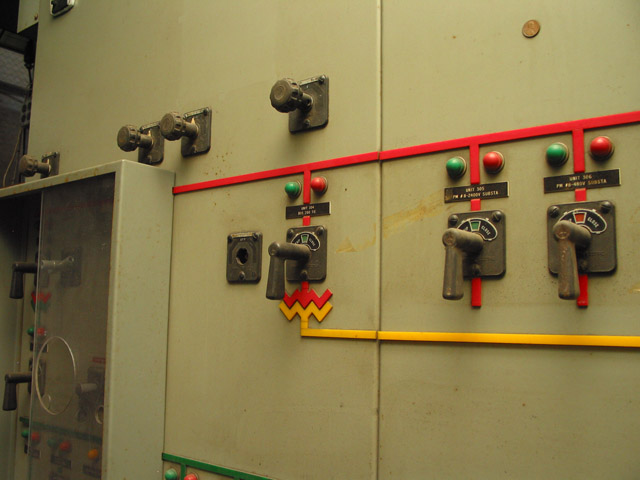
I am intrigued by these colored diagrams. I wonder what the different colors (red, green, blue and yellow) represent.

Some of the symbols used on the diagrams are also puzzling in their meaning.
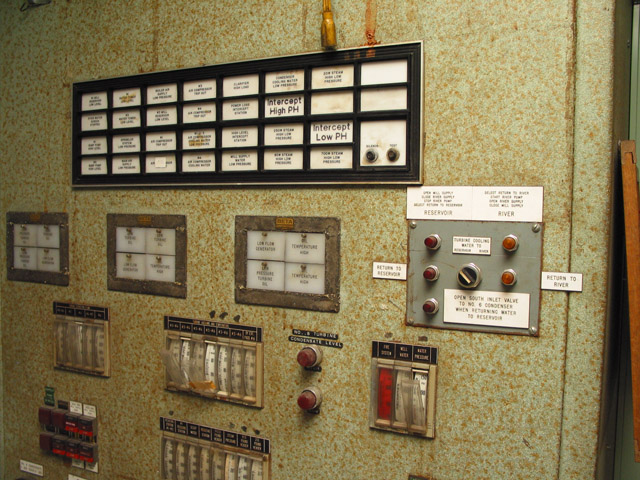
From here, one can direct the turbine cooling water to the "river" or the "reservoir".

Activities on the plant floor can be observed from the vantage point of a person sitting at the desk chair.
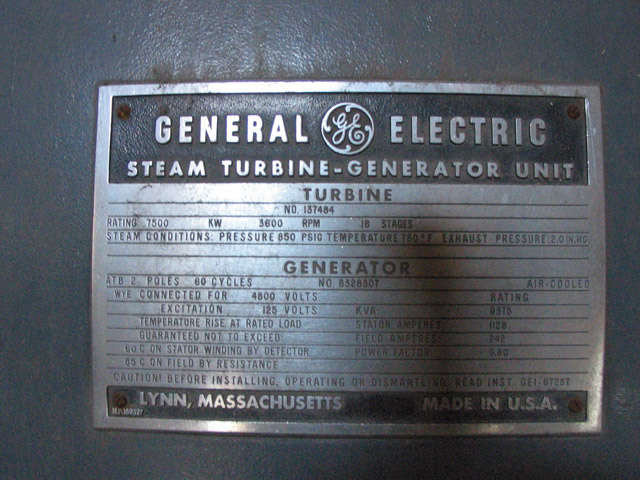
Some of the turbine-generator sets did not seem to have nameplates any more, but this one did.

A service panel had been removed from the side of this generating unit.
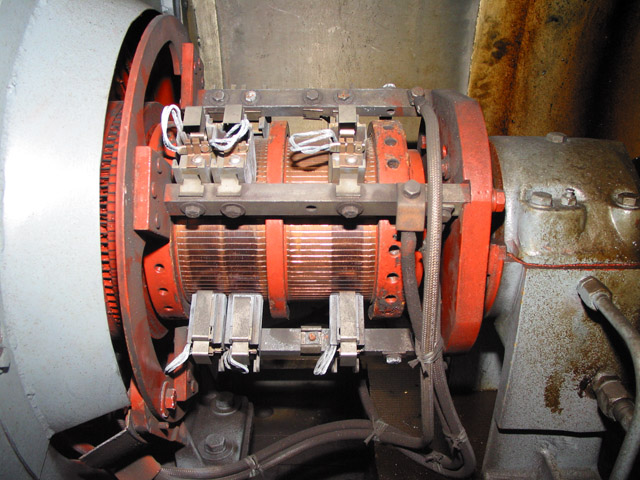
The generator's rotor and brushes(?) can be clearly seen through the access panel. The brushes are arranged in three pairs, each of which is 120 degrees from the others, in order to produce three-phase electricity.
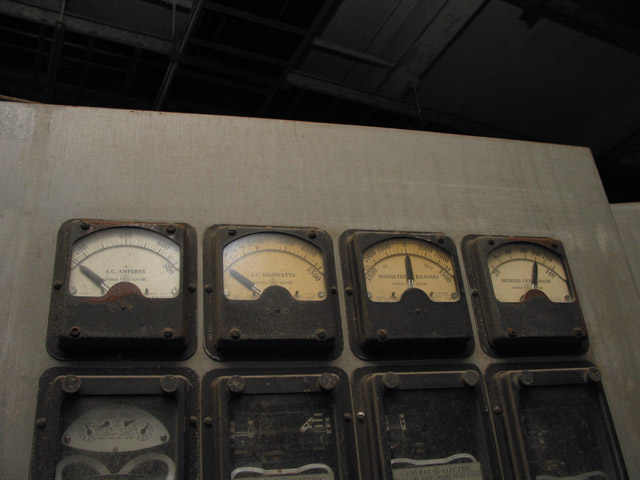
Some of the meters and gages in this plant look like they are straight out of the 1930s.
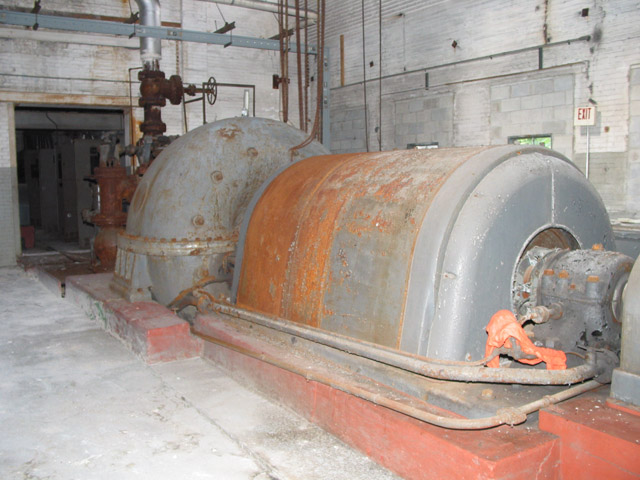
Moving on into the second turbine room, we find a turbine-generator set that is even older looking than the first two.
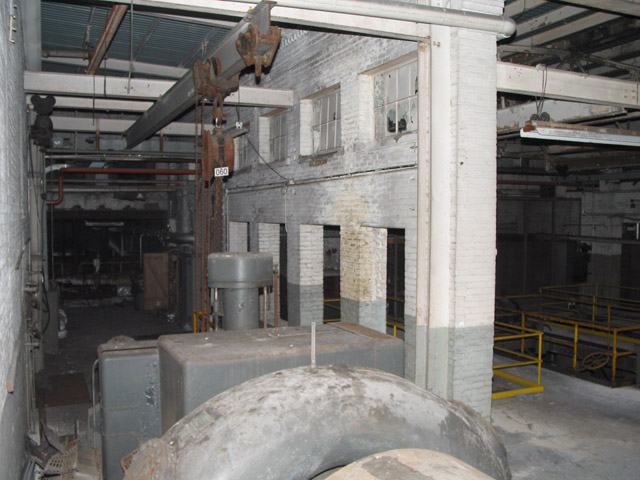
For some reason, this is the only picture I took of the fourth and final turbine/generator. Perhaps more interesting than the generator itself is the bizarre-looking wall behind it.
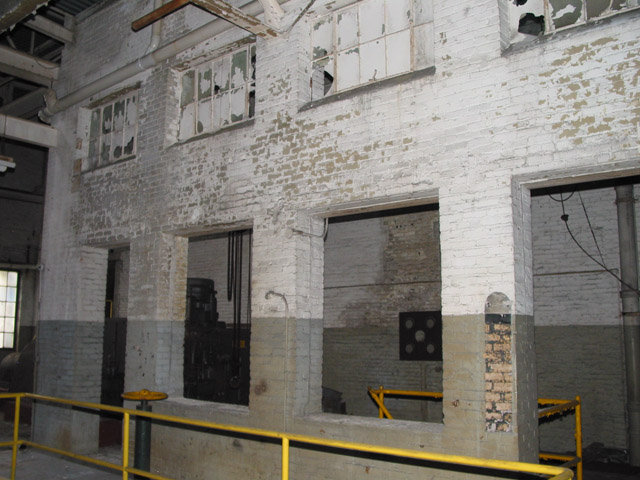
The wall looks like it was an exterior wall at one time. I know that these plants were often built and added on to in a piecemeal fashion, but given the layout of the plant, I don't quite understand this structure.

The exterior valve piping on this turbine is certainly well-rusted.